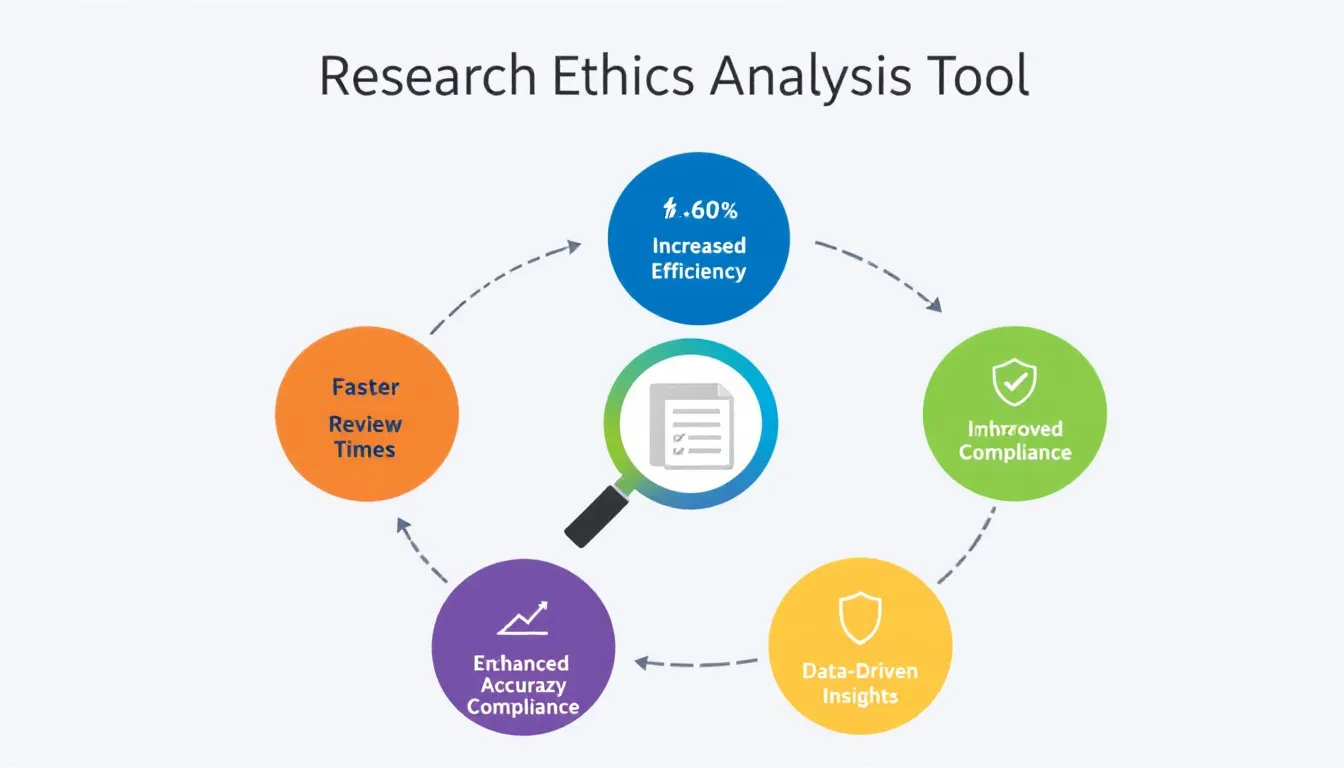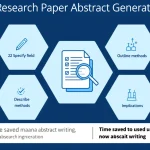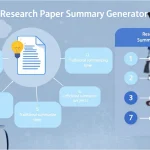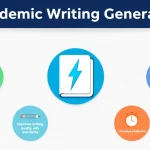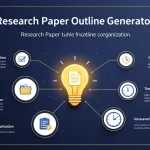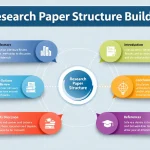Research Ethics Analysis
Is this tool helpful?
How to Use the Research Ethics Analysis Tool Effectively
The Research Ethics Analysis Tool is designed to provide a comprehensive ethical evaluation of academic research papers. To use this tool effectively, follow these steps:
- Enter the Research Topic: Begin by inputting the main topic of the research paper you want to analyze. For example, you might enter “The impact of social media on teenage mental health” or “Genetic engineering in crop production.”
- Provide the Paper Title: Input the full title of the research paper. This helps contextualize the analysis and ensures accuracy. An example could be “Exploring the Relationship Between Social Media Usage and Depression Among Adolescents: A Longitudinal Study.”
- Insert the Abstract: Copy and paste the abstract of the research paper into the designated field. This provides a concise summary of the study’s objectives, methods, results, and conclusions, which is crucial for the ethical analysis.
- Describe Research Methods (Optional): If you have additional information about the research methods used in the study, include it in this field. For instance, you might write “Mixed-methods approach combining surveys, interviews, and social media data analysis over a 2-year period.”
- Specify Ethical Guidelines (Optional): If the paper mentions any specific ethical guidelines or standards followed, include this information. For example, “Adherence to APA ethical guidelines, IRB approval obtained, parental consent for minor participants.”
- Submit for Analysis: Once you’ve filled in all required fields and any optional information, click the “Analyze Research Ethics” button to generate your comprehensive ethical analysis.
After submission, the tool will process your input and provide a detailed ethical analysis of the research paper. This analysis will be displayed in the results section, which you can then review, copy, or use as a basis for further ethical considerations in your academic work.
Understanding the Research Ethics Analysis Tool: Definition, Purpose, and Benefits
The Research Ethics Analysis Tool is a sophisticated web-based application designed to assist academic researchers, ethics committees, and students in conducting comprehensive ethical evaluations of research papers. Its primary purpose is to identify potential ethical concerns, compare methodologies with established guidelines, and provide actionable recommendations for improving the ethical integrity of academic research.
Definition and Core Functionality
At its core, this tool serves as an automated ethical consultant, leveraging advanced algorithms and a vast database of ethical guidelines to scrutinize research papers across various disciplines. It examines multiple aspects of a study, including:
- Research methods and data collection procedures
- Participant recruitment and consent processes
- Data handling and privacy considerations
- Potential conflicts of interest
- Interpretation and presentation of results
By analyzing these elements, the tool provides a holistic view of the ethical landscape of a given research paper, highlighting areas of concern and suggesting improvements.
Purpose and Objectives
The primary objectives of the Research Ethics Analysis Tool include:
- Enhancing Ethical Awareness: By systematically reviewing research papers, the tool raises awareness about potential ethical issues that might otherwise be overlooked.
- Standardizing Ethical Evaluation: It provides a consistent framework for ethical analysis, ensuring that all papers are evaluated against the same set of ethical standards and guidelines.
- Facilitating Ethical Compliance: The tool helps researchers align their work with established ethical norms and regulations in their respective fields.
- Improving Research Quality: By identifying and addressing ethical concerns early in the research process, the overall quality and integrity of academic research can be significantly enhanced.
- Educational Support: For students and early-career researchers, the tool serves as an educational resource, helping them understand and apply ethical principles in their work.
Benefits of Using the Research Ethics Analysis Tool
The implementation of this tool in academic and research settings offers numerous benefits:
- Time Efficiency: Conducting a thorough ethical analysis manually can be time-consuming. This tool streamlines the process, providing comprehensive results in a fraction of the time.
- Consistency and Objectivity: By using standardized criteria, the tool ensures a consistent and objective evaluation across different research papers and disciplines.
- Early Detection of Ethical Issues: Identifying potential ethical concerns early in the research process allows for timely adjustments, potentially saving resources and preventing ethical violations.
- Enhanced Credibility: Research papers that have undergone this ethical analysis may have increased credibility within the academic community and with publication boards.
- Continuous Learning: The tool’s recommendations serve as a learning opportunity for researchers to improve their understanding of ethical considerations in academic research.
- Comprehensive Documentation: The analysis provides a detailed record of ethical considerations, which can be valuable for institutional review boards, grant applications, and publication processes.
Addressing User Needs and Solving Specific Problems
The Research Ethics Analysis Tool is designed to address several critical needs in the academic research community and solve specific problems related to ethical compliance and research integrity. Let’s explore how this tool meets these needs and provides solutions to common challenges:
1. Navigating Complex Ethical Guidelines
Problem: Researchers often struggle to navigate the complex landscape of ethical guidelines, which can vary by discipline, institution, and country.
Solution: The tool incorporates a comprehensive database of ethical guidelines from various fields and regulatory bodies. It automatically applies relevant guidelines based on the research topic and methods, simplifying the process for researchers.
2. Ensuring Comprehensive Ethical Review
Problem: Manual ethical reviews may inadvertently overlook certain aspects, especially in complex or interdisciplinary studies.
Solution: The tool systematically evaluates multiple ethical dimensions of a research paper, ensuring a thorough and comprehensive review. It checks for issues related to methodology, data collection, participant rights, privacy, and result interpretation.
3. Identifying Subtle Ethical Concerns
Problem: Some ethical issues, particularly those related to bias or potential conflicts of interest, can be subtle and easily missed.
Solution: The tool employs advanced algorithms to detect nuanced ethical concerns. For example, it might flag potential bias in participant selection or identify possible conflicts of interest based on the research topic and methods described.
4. Providing Actionable Recommendations
Problem: Researchers often need guidance on how to address identified ethical issues effectively.
Solution: For each ethical concern identified, the tool provides specific, actionable recommendations. These suggestions are tailored to the research context and aligned with best practices in research ethics.
5. Supporting Ethics Education
Problem: Many researchers, especially those early in their careers, may lack comprehensive training in research ethics.
Solution: The tool serves an educational function by explaining ethical principles and their application in research contexts. Each analysis includes explanations of why certain aspects raise ethical concerns, promoting a deeper understanding of research ethics.
6. Streamlining Ethics Committee Reviews
Problem: Ethics committees often face a backlog of research proposals to review, leading to delays in research timelines.
Solution: By providing a preliminary ethical analysis, the tool can expedite the review process for ethics committees. It highlights key areas of concern, allowing committee members to focus their attention more efficiently.
7. Enhancing Research Reproducibility
Problem: Ethical issues can compromise the reproducibility and validity of research findings.
Solution: The tool emphasizes ethical practices that enhance research reproducibility, such as transparent reporting of methods, proper data management, and addressing potential biases.
8. Adapting to Evolving Ethical Standards
Problem: Ethical standards in research are continually evolving, making it challenging for researchers to stay current.
Solution: The tool is regularly updated to reflect the latest ethical guidelines and best practices across various fields, ensuring that researchers have access to the most current ethical standards.
Practical Applications and Use Cases
The Research Ethics Analysis Tool has a wide range of practical applications across various scenarios in academic and research settings. Let’s explore some specific use cases to illustrate its versatility and value:
1. Pre-submission Ethical Review for Journal Publications
Scenario: A team of psychologists has completed a study on the effects of mindfulness meditation on workplace stress. Before submitting their paper to a high-impact journal, they want to ensure it meets all ethical standards.
Application: The researchers input their paper details into the tool, including the abstract and methodology. The tool identifies potential ethical concerns regarding participant privacy in stress-level reporting and suggests additional measures to ensure anonymity. The team implements these suggestions, strengthening their paper’s ethical foundation before submission.
2. Graduate Student Thesis Preparation
Scenario: A Ph.D. candidate in environmental science is preparing a thesis on the impact of microplastics on marine ecosystems. They want to ensure their research methodology is ethically sound.
Application: The student uses the tool to analyze their research proposal. The analysis highlights the need for more careful consideration of the potential harm to marine life during sample collection. It provides recommendations for minimally invasive sampling techniques, helping the student refine their methodology to be more ethically responsible.
3. Ethical Compliance Check for Grant Applications
Scenario: A medical research team is applying for a large grant to study a new cancer treatment. They need to demonstrate strong ethical considerations in their proposal.
Application: The team runs their grant proposal through the tool. The analysis provides a comprehensive ethical evaluation, which they include in their application. This demonstrates their commitment to ethical research practices, potentially increasing their chances of securing the grant.
4. Institutional Review Board (IRB) Preparation
Scenario: A sociologist is planning a study on the experiences of refugees in urban settings. They need to prepare a thorough ethical review for their university’s IRB.
Application: Using the tool, the sociologist analyzes their research plan. The tool identifies potential issues with participant confidentiality and suggests protocols for secure data storage and anonymization. This analysis helps the researcher prepare a more robust IRB application, anticipating and addressing potential ethical concerns proactively.
5. Ethical Audit of Ongoing Research Projects
Scenario: A university’s research integrity office wants to conduct an ethical audit of ongoing research projects across different departments.
Application: The office uses the tool to analyze abstracts and methodologies of various ongoing projects. This process identifies a pattern of insufficient informed consent procedures in one department, allowing the office to provide targeted ethical training and support.
6. Peer Review Support
Scenario: An academic journal wants to enhance its peer review process by including a standardized ethical evaluation for all submitted papers.
Application: The journal incorporates the tool into its review process. Reviewers use the ethical analysis provided by the tool as a starting point for their ethical evaluation, ensuring a consistent and thorough ethical review across all submissions.
7. Cross-cultural Research Ethics Compliance
Scenario: An international team of researchers is planning a global study on child development practices across different cultures.
Application: The team uses the tool to analyze their research protocol. The analysis highlights potential ethical issues related to cultural sensitivity and suggests modifications to ensure respectful and appropriate research practices in diverse cultural contexts.
8. Ethical Considerations in Big Data Research
Scenario: A data science team is planning a large-scale analysis of social media data to study public opinion trends.
Application: The researchers use the tool to evaluate their methodology. The analysis raises important questions about data privacy and informed consent in the context of big data research. It provides guidelines on ethical data collection and anonymization techniques, helping the team design a more ethically robust study.
Frequently Asked Questions (FAQ)
1. What types of research papers can be analyzed with this tool?
The Research Ethics Analysis Tool is designed to evaluate a wide range of academic research papers across various disciplines, including but not limited to social sciences, natural sciences, medical research, and humanities. It can analyze quantitative, qualitative, and mixed-methods research papers.
2. How long does it take to receive the ethical analysis results?
The analysis typically takes a few minutes to complete, depending on the complexity of the research paper and the amount of information provided. Most users receive their results within 5-10 minutes of submission.
3. Can this tool replace human ethical review committees?
While the tool provides valuable insights and can significantly streamline the ethical review process, it is not intended to replace human ethical review committees. Instead, it serves as a complementary tool to assist and enhance the work of these committees.
4. How often is the ethical guidelines database updated?
The ethical guidelines database is continuously updated to reflect the latest standards and best practices in research ethics. Major updates are typically implemented quarterly, with minor updates and refinements occurring more frequently.
5. Can I use this tool for collaborative research projects?
Yes, the tool is excellent for collaborative research projects. It provides a standardized ethical analysis that can be shared among team members, ensuring all collaborators are aligned on ethical considerations.
6. Is there a limit to the number of papers I can analyze?
There is no set limit on the number of papers you can analyze. The tool is designed to accommodate the needs of individual researchers, research teams, and institutions alike.
7. How does the tool handle discipline-specific ethical guidelines?
The tool incorporates discipline-specific ethical guidelines in its analysis. When you input the research topic and methods, it automatically applies relevant guidelines for that particular field of study.
8. Can this tool analyze research proposals as well as completed papers?
Yes, the tool can analyze both research proposals and completed research papers. For proposals, it focuses on potential ethical issues in the planned methodology and provides recommendations for ethical research design.
9. How detailed should the abstract be for optimal analysis?
For the best results, provide a comprehensive abstract that includes the research objectives, methodology, key findings, and conclusions. The more detailed the abstract, the more thorough and accurate the ethical analysis will be.
10. Is the tool suitable for undergraduate students learning about research ethics?
Absolutely! The tool is an excellent educational resource for undergraduate students. It provides clear explanations of ethical principles and their applications, helping students develop a strong foundation in research ethics.
Important Disclaimer
The calculations, results, and content provided by our tools are not guaranteed to be accurate, complete, or reliable. Users are responsible for verifying and interpreting the results. Our content and tools may contain errors, biases, or inconsistencies. We reserve the right to save inputs and outputs from our tools for the purposes of error debugging, bias identification, and performance improvement. External companies providing AI models used in our tools may also save and process data in accordance with their own policies. By using our tools, you consent to this data collection and processing. We reserve the right to limit the usage of our tools based on current usability factors. By using our tools, you acknowledge that you have read, understood, and agreed to this disclaimer. You accept the inherent risks and limitations associated with the use of our tools and services.
